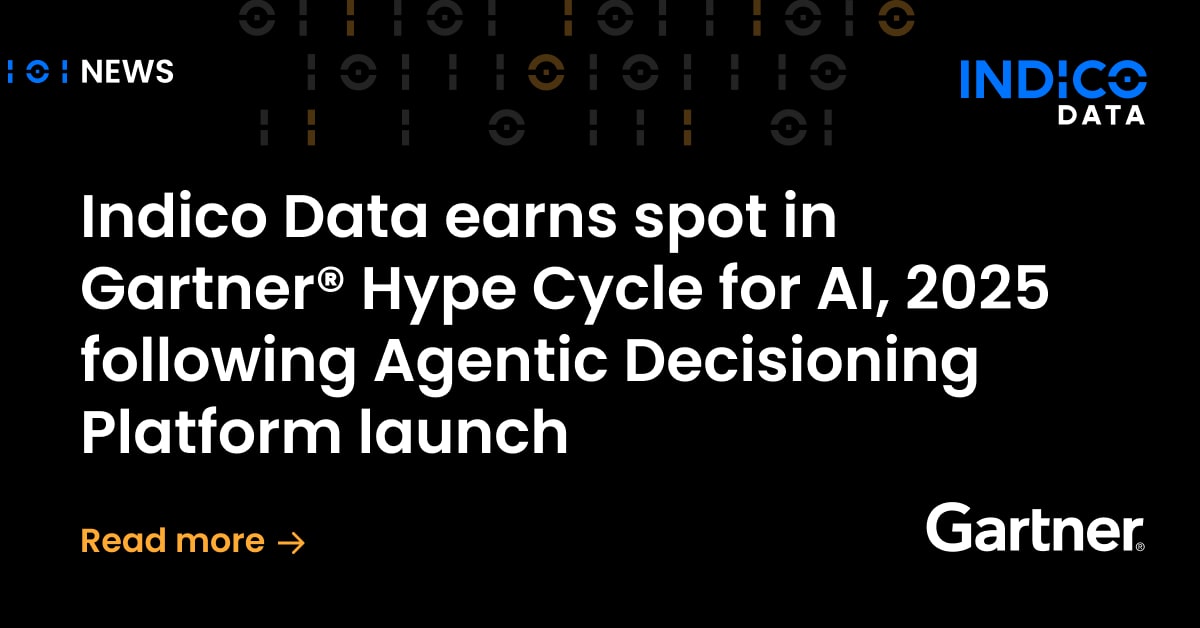You probably recall early on in the pandemic how the U.S. Small Business Association made loans available to help businesses stay afloat. Perhaps you also remember how, as a result, banks were inundated with loan applications. What you may not know is that at least one of them turned to process automation tools to help it deal with some 35,000 loan applications.
I learned about this story from Satish Shenoy, the VP of Technology Alliances and Ecosystems at SS&C Blue Prism, who was my guest on the latest episode of my podcast.
Listen to the full podcast here: Unstructured Unlocked episode 6 with Satish Shenoy
SS&C Blue Prism is a leader in the robotic process automation (RPA) space – as well as an Indico Data partner. Shenoy and I discussed a number of topics, including best practices for onboarding digital workers and the levels of maturity automation centers of excellence (COEs) go through. We also talked about how one of our common customers, a large insurance company, is a great example of how best to employ both RPA and intelligent automation to automate insurance processes involving unstructured documents.
Change management best practices
First, I asked him about best practices for change management when it comes to onboarding digital technology, or “digital workers” as software robots are sometimes referred to.
“If I can pick one thing, it’s that the fear of the unknown and making sure people understand where the automation technology is being used, why is it being used and what happens to their job,” he said. “Education is critical.”
In the vast majority of cases, technology is used to augment workers, not replace them. A prime example was the bank faced with processing 35,000 SBA loans. The customer called on a Friday night with a dilemma: it had all these applications and faced a government-imposed deadline for processing them.
“Well you could hire 1,000 people, if you can find them in a pandemic,” Shenoy said. “Or could leverage innovative technology.”
SS&C Blue Prism helped the bank deploy RPA digital robots to help process the loans. In the end, it saved jobs not only for the bank, but for all the companies on whose behalf the bank was able to process loans. “Digital workers can save the day,” as Satish put it.
Related content: How intelligent document processing can address the bank efficiency ratio issue
Automating insurance processes involving unstructured data
Some processes are more complex than others, of course, especially when they involve unstructured content. That’s where an intelligent automation platform that can handle unstructured data can complement an RPA tool.
A global insurance company that’s a mutual customer of Indico Data and SS&C Blue Prism presents a case in point. “They use Blue Prism in HR, in finance, in the front office for claims processing, and so on. In a lot of those use cases, they come across unstructured data,” Shenoy said. “What we see happening there is the two talk together … in each of these use cases where there is unstructured data.”
One example is how the customer automates the insurance submission process. Typically, submissions come in from brokers via email, often with a large PDF attachment that includes several discreet documents.
The customer uses Blue Prism to send the email to Indico, which is able to “read” the email, which is unstructured, extract pertinent data and turn it into a structured format. That data can now be sent back to Blue Prism for some validation and insertion into a downstream underwriting system.
A similar process tackles the attachments. The Indico Unstructured Data Platform is able to examine the large PDF, which consists entirely of unstructured data, and break it up into discreet documents. It then extracts data from each of the documents, turns it into a structured format and again sends it back to Blue Prism. Blue Prism then routes the data to the appropriate decision-making system. In instances when the company is quoting an existing customer, the automated tools may also do a database lookup and pull in more pertinent information.
You can imagine how all of this saves considerable time and effort for the insurance company’s employees, effectively expanding the company’s workforce – enabling the same number of people to process far more submissions.
“It’s beautiful to see it in action,” Shenoy said.
Related content: How intelligent document processing reduces risk for insurance companies
Automation COE maturity levels
That it is, and the customer is also an example of one that has shot up the automation tech maturity curve. They’re an example of a company that’s using tools together effectively rather than expecting any single platform to handle all of its automation challenges – as nice as that would be, it’s really not a reality right now.
Shenoy said he sees three levels of maturity with respect to automation COEs. First is efficiency and productivity, where companies are just starting to deploy automation technology. Next comes business performance, where a company starts marrying different technologies together – like the insurance company did with Blue Prism and Indico – to drive certain business outcomes.
Level three is business transformation, he said. That’s when companies create processes specific to digital workers, as opposed to applying automation to processes once performed by employees. For example, most processes optimized for human workers don’t run 24×7 or overnight. But there’s no reason digital processes need to be bound by such constraints.
Nirvana is getting to that third level where you have a significant digital workforce and start thinking about how to do things differently from the past. “If you can get to that level of maturity, you are really achieving transformation,” Satish said.
Hopefully, that gives you a taste of my conversation with Satish Shenoy.
Check out the full Unstructured Unlocked podcast on your favorite platform, including:
Read the full transcript of the podcast here.


